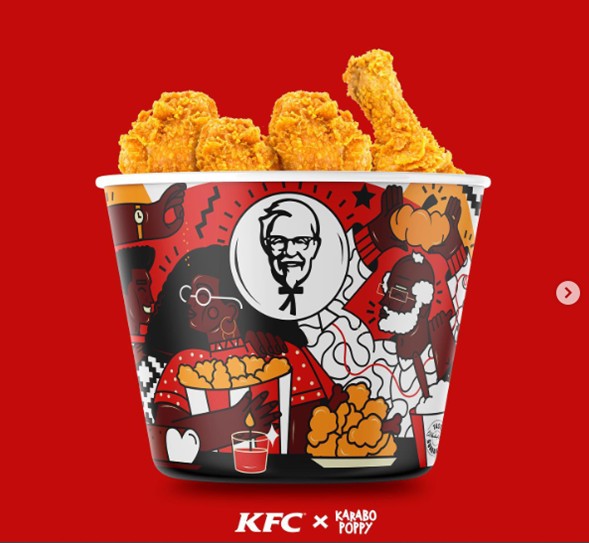Unlike marketing efforts for larger demographics, local digital marketing has challenges requiring specific planning for success. A proper local digital marketing strategy will differentiate a booming business from one with little to no online recognition.
Even though local digital marketing has its benefits, not every strategy works. For this reason, we at Nomadic Advertising believe that business owners or marketers need to understand the audience first and plan carefully to get maximum returns.
What is Localized Marketing and Why is It Important?
Let’s start at the beginning. Localized marketing involves strategies to help businesses reach their target customers in a specific region. These online marketing strategies will help business owners get their products out and engage new or potential customers in a specific region. In most cases, businesses that use local marketing typically have a physical location like restaurants, spas, or medical offices in their community.

- Companies embrace localized marketing strategies because it fosters customer trust, and when customers trust your business, they always come back.
- For this reason, your venture will generate more sales with a low attrition rate.
- If done right, localized marketing can also improve interaction with your brand, drive better online search results, and build stronger brand consistency.
Creating a Localized Marketing Strategy
When creating a useful localization marketing strategy or location-based marketing strategy, it’s imperative to consider the customer’s journey from discovery to interaction.
A good strategy usually involves:
- Website localization
- Utilizing localized apps
- Translation management
- International audience research
- Audience localization
- And other relevant marketing ideas
As new companies enter the international markets, the missing link to successful global expansion could very well be a marketing localization strategy that is well-planned and skillfully executed. To create a suitable localized marketing strategy, you need to perform some market research on your target audience and optimize your strategies to suit them. Always ensure you consistently track the performance of your localized marketing campaigns in case there’s a need for any changes.
Let’s see the “must haves” of any local digital marketing strategy.
Local content marketing
Local content marketing describes creating and sharing valuable, informative content that resonates with your target audience. Utilizing content marketing is imperative for small businesses because they help:
- Establish a connection with their target audience: In a content marketing strategy, your target audience is the most significant factor to consider. Hence, having a great strategy will help in addressing their needs leaving you leads that convert into satisfied customers.
- Build trust and credibility: With local content marketing, your target audience doesn’t only have a connection with you. They also have a degree of trust in your brand. Your audience trusts you because you positioned yourself as an authority/expert in the industry.
- Improve search engine rankings: Creating unique and relevant content with relevant keywords for your local audience increases the chances for better search ranking. In turn, this leads to more traffic on your business website.
To begin with local content marketing, here are some of the important marketing tactics to try:
1. Understand your target audience: The only way to build a connection with your target audience is to understand them and their specific needs. Understanding your target audience will help your business build content that resonates with them and provides much-needed value.
2. Create valuable content: Since you’re trying to meet the specific needs of your target audience, ensure that your content is original, engaging, and informative. You can use videos and infographics to improve engagement.
3. Promote content: After content creation, the next important step is content promotion. Share your content using your social media profile to reach a larger audience in your local community.
4. Accurately measure results: Continuously track your content marketing strategy results to stay on track with your efforts.
Localization advertising

Ad localization involves adapting the copy or design of an advert for a local audience or specific demographic. With local advertising, you can create campaigns that involve Google’s properties, including Google Maps, Display Network, Gmail, and YouTube.
One of the many benefits of localization advertising is that it helps businesses reach specific demographics, which is generally important in online marketing. Platforms like Google Ads use demographics to reach specific age groups, genders, and more.
- Local search ads also allow businesses to stay ahead of the competition. For instance, using Google Maps in your overall ad campaign can help you reach close to 54% of smartphone users. If your competition doesn’t maximize Google Maps, you’ll be your audience’s first point of contact.
- Maximizing localization advertising helps improve conversion levels as your ads reach the right people. Improved conversion helps you get to know your customers better, reduces acquisition costs, and leverages the current website traffic.
- When someone finds your website or business through local search ads, there’s a high chance for them to reach out to you. This opportunity can result in lead generation.
Brand localization
When creating a localized marketing strategy, ensure your brand is more local. Some of the steps that will improve brand localization are:
1. Good geotargeting: Brands can deliver different ads to customers based on certain factors. Examples of these factors are interests, age, and location. When brands maximize these factors, they can create unique ads that feel personal and uniquely relate to the customer. With geotargeting, your business can deliver the right message at the right time.
2. Partnering with influencers in the area: To attract those around the business’s geolocation, brands can build their online appeal by working with local influencers. Most influencers with active geo-specific community fans can create content that people in the region relate to. You can also use individuals with average following to help organically promote your brand – User Generated Content (UGC).
3. Maximizing niche hyperlocal communities: Businesses can enter into hyperlocal communities when influencer marketing is done right. All the company needs to do is find out who leads those communities and make them an ambassador for the brand. Taking this step makes people perceive the brand as authentic and trustworthy.
4. Create custom pages based on IP: Use your visitor’s specific address to create unique regional content. For instance, if you have a prospective customer from Florida, you can have a landing page that welcomes them to the “Sunshine State.” You can also include the Florida flag in the landing page design.
5. Get listed on significant platforms: Get listed on platforms like Google, Yelp, Facebook, My Business, and other relevant platforms.
Local vs. organic SEO
Organic SEO utilizes online web strategies to target prospective customers. This strategy is suitable for brands willing to build momentum for brand awareness. Local SEO may be a better alternative to organic Search Engine Optimization as it helps target a specific local audience in a geographical area. A solid local SEO strategy contemplates different online channels and methods.
Here are some tips that would help in implementing your local SEO:
- Set up Google Business: To help prospective customers find you easily, set up a Google Business Profile (GBP) and ensure it’s current. In most cases, your Google Business Profile is the first contact a prospective customer has with your business. Hence, it’s imperative to have one to boost your visibility.

Example: Daniel Brown Law Google Business Profile
To set up Google Business, you need to provide your full business name, its physical location, Google Maps location, the business category, and phone number/website link.
- Localizing Web Content: When people hear “local SEO,” they think of Google Business Profiles, locally run ads, and directory optimization. While those factors are important, local SEO also largely deals with content. For this reason, businesses should endeavor to optimize their web pages for local terms customers search the most (common search queries).
- Optimizing Local Web Pages: Once you discover the terms you intend to target, the next important step is content optimization based on the search terms. Optimize local web pages by including target keywords, writing concise and informative meta descriptions, using useful and keyword-influenced body content, including images with their alt texts, using appropriate headings, and linking to internal pages on the website.
- Be location specific: When optimizing your website for local searchers, include location-specific keywords throughout your content. Using those keywords helps the search engine know you’re a local business.
Adding your NAP info
NAP is a common term in local SEO, and it’s also one of the major problems with local business owners. Some companies have inconsistent NAP/NAP+W information in the places their business is listed online. Over time, NAP information inconsistency affects the business’s online ranking.
So, what is NAP, and how do you fix the problem of inconsistent NAP information? NAP stands for Name, Address, and Phone number. Many may also refer to it as NAP+W when a website address is included. Google uses this information on listings such as Yelp and Google My Business to determine the ranking for your business. Hence, incorrect NAP information can confuse your customers, causing a poor user experience.
Everywhere your business is listed is called a citation. You don’t get your maximum ranking if your NAP/NAP+W is inconsistent across the different sites. So, ensure your key business listings online are accurate and consistent to avoid or fix inconsistencies.
For example, you should begin with the Secretary of State Filing for your business, Google My Business, data providers like Axiom and Infogroup, and other major online listings like Apple Maps, Yelp (customer reviews available), and Facebook.

Example: Yelp listing for Toronto lawyers
Pro tip: f you’re a business with multiple locations, you also need to ensure your NAP consistency on all of them. Include NAPs on each of your business location web pages.
Website localization
Website localization involves adapting your website to fit a specific local audience. To do this, businesses must understand their culture and other content preferences. You also need to ensure that your website is targeting the right audience.

Here are some helpful tips on targeting the appropriate audience for your website:
1. Define your business’s demographic: In website localization, you must know the specific demographic to target. Not everyone in the local community will be interested in your product or service. So, research the gender that will prefer your services, the age bracket, education level, or interests.
2. Understand how customers will discover you: Customers have different preferences regarding their mode of communication. So, you should research your niche crowd and discover the channels they can find comfortable reaching out to you.
3. Consider Facebook and other social media ads: Social media is one of the major drivers of business growth. It’s a marketplace filled with people with various interests and ideas. Hence, you can maximize those interests using social media ads appropriately. Consider social platforms like Facebook, Twitter, LinkedIn, Pinterest, and Instagram for your ads.
4. Support local businesses and events: More involvement with your local business network is great for local marketing. Use social media platforms like Twitter to post about upcoming community events and congratulate other small local businesses. However, while supporting those local businesses, remember you shouldn’t do the same for competitors.
5. Maximize location tags and other hashtags: Ensure your website connects users to your social media and vice-versa. Use hashtags and location tags to make locating your social media content easier for local users. For instance, if your business is based in Chicago, you can use #Chicago for potential customers in the region to discover you. You could also check out how other competitors use their hashtags.
Join a local business directory
A major step to take in localized marketing is joining a business directory. Finding the right directory that suits your needs will help enhance your online presence, improve local visibility, and boost SEO. Here are a few of the common directories or review sites to consider and what makes them unique:
- Google My Business: Google My Business, through Google Business Profile, allows business owners to claim their businesses on Google. It also displays vital business information like your website URL, address, phone number, and other necessary information. GBP is free, easy to use, and has insights on listing performance every month.

Example: Google Business Profile from RASA restaurant in Toronto
- Bing Places: Bing by Microsoft is also significantly common and stands as the second-largest search engine in the world. Bing Places is an online business directory that allows users to find business information and location.

Bing Places online directory
Keep in mind: Google doesn’t display Bing Places in its search results. However, those who use Bing will get that directory.
- Yelp: This directory includes recommendations and positive reviews and negative reviews from previous customers. It’s a good app to establish the brand, and improve trust since it involves giving online reviews and increasing the customer base. Business profiles on Yelp can send public and private messages to customers. A business can also enjoy its reporting tool, which allows businesses to analyze business trends.

Example: Yelp listing for dentists in Toronto
- Better Business Bureau: To get an additional vote of confidence or trust from potential customers, get accredited by Better Business Bureau (BBB). This directory follows a lot of standards. So, meeting them positions your business as trustworthy. Close to 13 million customers use the BBB to discover businesses they trust.
- Facebook: Facebook is one of the most powerful tools for local marketing. It has close to 2.8 billion users a month, while 1.8 billion use the social media site. Businesses looking forward to expanding locally should consider opening a Facebook business profile for social media marketing.
Localized marketing examples
If you’re looking for a template to follow for successful brands doing great at local content marketing, here are some examples to follow:
#1 H&M

After extensive research on their target audience, H&M launched a localized marketing campaign for their regional consumers. The brand stocked more local brands and also offered additional services like repairing, selling, and renting clothes.
The H&M local marketing strategy worked because they focused on the interests and lifestyles of people in Amsterdam. The brand successfully tapped into its market by offering solutions to its major environmental problems.
Amsterdam became the first city to introduce the renewed retail technique. With the rise in sustainability discussions and green consumerism, the timing of the strategy was close to perfect. The aim of the H&M campaign, according to campaign strategist Diederik Luger was to show that the brand listens to its environment at a local level and is ready for change.
#2 Nike
When discussing marketing and branding, Nike is a force to reckon with. This sportswear brand is global but strategically reaches 170 countries with its local marketing strategies. In its “Own the Floor” campaign, the brand emphasized what it means to live in a big city like New York.
The campaign appealed to New Yorkers and showed them places and activities they recognized. For instance, the ad campaign showed pizzerias, laundromats, and even subway platforms to deepen the feeling of connection between NYCers and Nike.
#3 Frito Lay Potato Chips

Frito Lay used the UEFA Champions League Final to appeal to their European audience.

The marketing team also used the Super Bowl in a different ad to appeal to the American audience.

The brand’s marketing strategy allowed for connecting with the target market by using local events. Frito Lay tailored its insight with familiarity to successfully connect with consumers on a personal level about sports that they find appealing.
#4 KFC

Source: https://www.instagram.com/p/CcNPq7mNbLT/
KFC, in a marketing campaign in South Africa, introduced “limited-edition” buckets including the Karabo Poppy’s artwork. This technique encouraged consumers to take pictures and post them on social media platforms with the hashtag “#madeforsharing.”
KFC’s marketing campaign worked because the brand learned how to tailor its menu to regional tastes around the world. The kitchen brand connected with its target market through influencer marketing. Even though they were focused on limited-edition offers, they proved their understanding of their various audiences and what draws them to KFC.
Is it necessary to hire a local marketing company?
Hiring a local marketing company makes your work much easier as a business. Marketing requires expertise and understanding of many ad concepts and, often, human psychology. Juggling between the responsibilities of your business and marketing simultaneously can be a war. For this reason, it’s best to opt for a digital marketing agency like Nomadic Advertising to help optimize your local marketing strategies.
Results matter, but every client is unique. So, we ensure that we deploy tailored local marketing strategies for every business for a positive experience. Reach out to us today by booking a free consultation to discuss your business needs and an effective local marketing strategy for your business.
FAQs
What are local businesses?
A local business is any company that offers products or services to a population within a specific region. Many refer to these kinds of companies as “brick and mortar.”
How to promote your business locally
When promoting your business locally, start by joining local groups to form partnerships or build relationships. You can also engage in competitions and contests, offer local discounts and rewards, add a business to local listings, or sponsor events.
Why local marketing is important
Local marketing is an effective tool for businesses looking to increase conversions in a certain local community. It helps increase a company’s growth goals by gaining valuable customer insights, improving customer retention, and driving revenue. Local marketing establishes businesses as key players in their industry.
How long should a marketing campaign last?
An ideal online marketing campaign usually lasts for three months. However, the period for marketing campaigns varies, depending on factors like your message, budget, and overall expectations. Most online marketing campaign timeframes highly depend on the marketing budget.
What are global marketing campaigns?
Global marketing campaigns aim to advertise products or services to a global audience rather than a local or regional one. Compared to local campaigns, they are broad and generalized. Oftentimes, global marketing campaigns are significantly more complex than local marketing campaigns.





